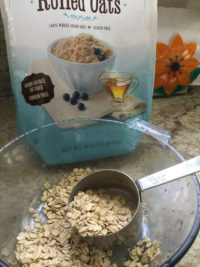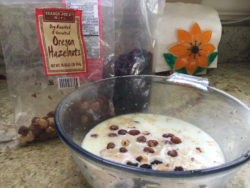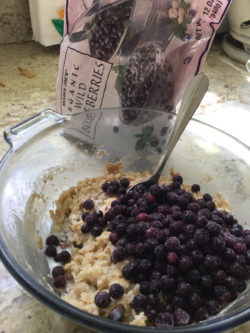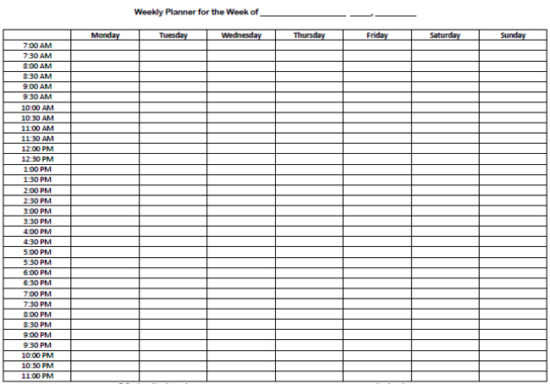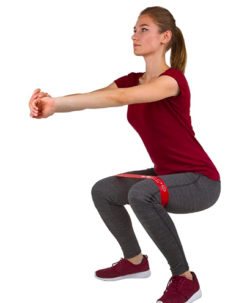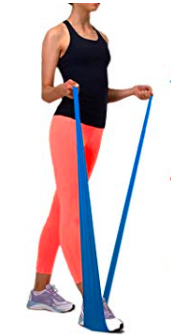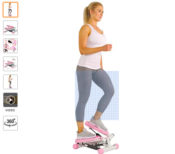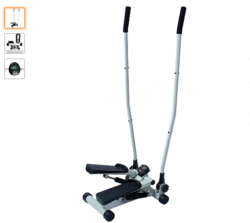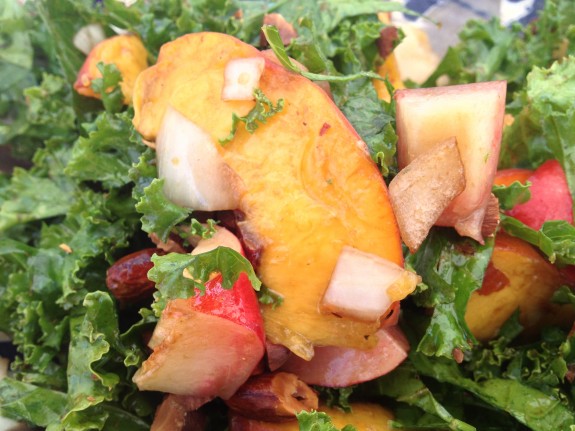Isolation Part 3: Katherine’s Silver Lining Approach – Use This Time to Get Healthy & Fit!
- At March 23, 2020
- By Katherine
- In Articles, News
 0
0
Yesterday morning I was so tempted to skip exercise. It was hard tearing myself away from reaching out to you. Are you happy with your health and weight? Can I help? Would you like to join me? Since I don’t want to go to pot, I exercised! What about you?
There is light – or clouds – at the end of the tunnel. You could come out of today’s situation with new, great habits, in better shape, even happier, healthier, and feeling proud of yourself. Or you could end up feeling miserable, with higher blood sugar, blood pressure, cholesterol and body fat. What’s it going to be?
 I’m trying to take the “silver lining” approach and consider this moment as an opportunity to improve my habits.
I’m trying to take the “silver lining” approach and consider this moment as an opportunity to improve my habits.
Would you like to join me? Organizing your routine, day by day – even hour by hour – is important for introducing calm, relief, improved productivity, health, and even happiness into your life during this stressful time.
The first step to transforming this isolation into a happier, healthier time is creating a schedule with which everyone agrees. Ask yourself and your family members the following questions:
- What has the normal schedule for everyone been, before isolation began?
- Which activities does everyone want to include every day?
- What goals do you want to achieve now, and at the end of isolation?
- How can you design a schedule at home that includes 1.Exercise/recreation, 2.Work/learning, 3.Socializing, 4.Relaxation/meditation/prayer, and 5.Renewal/sleep
Here is an example of what your schedule may look like. This is a template. You could make yours with more – or less – detail and different activities.
Some ideas:
7 am Coffee
7:30 am Exercise: at least 4,000 steps with Family
8:30 am Shower
9:00 am Breakfast with Family
10:00 am Work / Study
11:00 am Short Walk or Play
11:15 am Work / Study
12:30 pm Lunch with Family
1:30 pm Recess for All!
2:30 pm Back to Work / Study
3:30 pm Short Walk or Play
3:45 Back to Work
5:00 Dinner with Family
6:00 Exercise: at least 4,000 steps with Family
7:00 Recreation / Relaxation / Homework
8:00 Recreation / Relaxation / Homework
? Renewal / Bed Time / Sleep
Make up your own schedule. But have one! I’d be happy to help.
Isolated? Part 2: Ideas & Products for Home Exercise
- At March 14, 2020
- By Katherine
- In Articles, News
 0
0
As I was (virtually) meeting my many isolated clients this week, I realized that chaos could reign if we didn’t think fast and do something NOW. One of my biggest worries is that inactivity can take over. Stir crazy anyone?
 Children aren’t playing their daily school sports, college students aren’t walking to and from their classrooms, adults aren’t moving around their offices, businesses are closing down, and virtually no one is going to the gym. What’s a quarantined human to do besides finding comfort in a padded cell or imprisoning your family?
Children aren’t playing their daily school sports, college students aren’t walking to and from their classrooms, adults aren’t moving around their offices, businesses are closing down, and virtually no one is going to the gym. What’s a quarantined human to do besides finding comfort in a padded cell or imprisoning your family?
I had a Eureka moment the other day. Over the past several years, I have invested in some inexpensive exercise gadgets that take up hardly any space, and I’m recommending them to my clients. You can get excellent instruction on how to use these from a certified trainer (I’ll bet your trainer or physical therapist would be willing to work with you via FaceTime or Skype), or online. You may want to consider these easy-to-use exercise aids:
HealthySport 10″ Resistance Band Loops
TheraBands Professional Non-Latex Elastic Bands Set
Sunny Health and Fitness Adjustable Twist Stepper
Phoenix 98107 Duel Action Mini Stepper
Mini treadmills that can go under your desk: “Opps Decor,” “Goplus,” “Ancheer,”
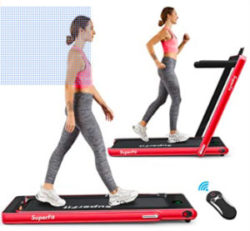
Mini treadmills can even go under your desk. I love them, my clients love them. It will transform your health and your life!
Isolated? The Power of Music
- At March 14, 2020
- By Katherine
- In Articles, News
 2
2
As I was (virtually) meeting my clients this week, I realized that, by now, home life could be pretty chaotic if we haven’t come up with solutions so we can all stay healthy – and sane.
First, the psychological: Our frame of mind forms the foundation of our responses and our ability to cope. For instance, taking the high road by helping each other as much as possible (instead of playing the blame game). Understanding: We’re all in this together! Not just our families, our communities, our schools, sports, businesses, but the world.
 Italians really know how to make the best of any situation: I just enjoyed some video clips of quarantined Italians singing joyfully together from their apartment balconies (picture a scene in the classic Hitchcock movie, “Rear Window”). Even an opera singer was serenading her neighbors with an aria. What spirit! I have a vision of my neighbors and I singing from our windows and front stoops. Hmmm… What aria will we bellow out to each other?
Italians really know how to make the best of any situation: I just enjoyed some video clips of quarantined Italians singing joyfully together from their apartment balconies (picture a scene in the classic Hitchcock movie, “Rear Window”). Even an opera singer was serenading her neighbors with an aria. What spirit! I have a vision of my neighbors and I singing from our windows and front stoops. Hmmm… What aria will we bellow out to each other?
I’m serious. Soprano Renée Fleming and the National Institutes of Health teamed up to research the effects of music on the brain. Does music soothe the savage beast? The initiative is called “Sound Health: An NIH-Kennedy Center Partnership.” Some initial scientific findings:
- Music helps brain networks mediate emotion, relieve stress and help treat depression,
- Musical training can foster the development of a variety of nonmusical

Sound Health: NIH & Kennedy Center Team Up to Explore Music & The Brain. Soprano Renée Fleming, CNN’s Sanjay Gupta, NIH Director Francis Collins
skills in children,
- Music therapy can help childhood cancer patients cope with the stress of treatment,
- Music may help relieve pain, including its impact on several brain circuits and pathways, and
- Musical activities benefit the aging brain, including promising applications in people with Parkinson’s disease, stroke, or dementia.
I don’t know about you, but I’m CALLING ALL NEIGHBORS!
Rev-Up Your Immune System Through Nutrition
- At March 11, 2020
- By Katherine
- In Articles, News
 0
0
Check out CNN’s video featuring Katherine’s immune-boosting tips:
What you eat profoundly affects your ability to fight disease. With all the nasty bugs going around this cold and flu season, it’s especially important to pay attention to boosting your immune system through nutrition. While every nutrient is important for your body’s ability to prevent and fight disease – from colds to cancer – certain nutrients play key roles:
Found naturally in yogurt and kefir, probiotics nourish your gastrointestinal tract’s microbiome, that is, its microscopic ecosystem of cells called “microbes.” The health of your microbiome can make – or break – your health in every way. Eating foods high in probiotics (and prebiotics) is the best, if not the only, way to make sure your microbiome is filled with those healthy microbes.
But probiotics can’t work alone. To be effective, you also need foods containing prebiotics, certain high fiber plant foods, to create the good health you desire. Prebiotics nourish probiotics. Together they form the critical prebiotic/probiotic duo creating a microbiome teeming with healthy microbes that achieve the superior level of beneficial microbes that fight off chronic and acute diseases.
While not always, microbes usually live in harmony with their human hosts. They inhabit just about every part of the human body, living on the skin, in the gut, and up the nose. The healthy ones, increased with probiotics, are essential for good health and survival.
But there are dangerous ones, too, that cause disease and death. The typical American diet and lifestyle produce more of the disease-causing microbes. Your health and quality of life suffer dramatically when the unhealthy microbes outnumber the healthy ones. The only way to keep that from happening is to consistently nourish your body the right way so you can be as healthy, happy and energetic as possible.
Your prescription:
DAILY eat yogurt or kefir, in whatever form you like best
Protein
Protein is one of the most important nutrients in the human body, second only to water. Bone health, muscle function, muscle strength, muscle mass and immune function — all are impaired with a low protein intake. In fact, the antibodies which are essential to protecting your body against pathogens, are made of protein, so without enough protein, your body has no chance. Certain vulnerable populations, such as the elderly, children, and those who already have compromised immune systems, should be particularly careful to eat enough protein – in fact, even more than the recommended dietary allowance – for maximized protection.
Protein can be found in a wide range of foods. Animal protein is in seafood, dairy, meat, poultry and eggs. Vegetarian protein can be found in legumes, soy, vegetables and whole grains. And while it’s true that high-protein foods often bring fat and calories along as uninvited guests, it doesn’t have to be that way. The lowest-calorie animal protein sources are the leanest. Go for eggs, seafood, poultry with no skin, skim milk, nonfat or low fat yogurt, and low fat cheeses are also great options. Soy products also provide great low-calorie options and are high quality proteins similar to animal protein.
Protein foods have other benefits. Fish, legumes, seeds, nuts contain immune-boosters zinc and iron (but in too high quantities, for instance in megadose vitamin pills, can backfire and suppress the immune system). Dairy products (keep them fat-free or low fat) are naturally loaded with magnesium, potassium and calcium – all important for immune function. Beans and soy beans are high in iron, zinc and magnesium.
Fats and Oils
The type of fat you eat can improve the effectiveness of your body’s immune response because fat ends up in all of your body’s cell walls. It acts as a cell lubricant, improves flexibility and communication between cells, and is important for cell metabolism and gene expression. If the fat you eat is saturated – solid at room temperature – as in butter or animal fat – this decreases cellular flexibility and functioning. So, to maximize your immune response, use oils in your cooking, such as olive oil (for drizzling), peanut/nut oils (for high heat cooking), and canola oil (for high heat cooking), and stick with foods high in heart-healthy fats, such as nuts, avocados and fatty fish, which is high in omega-3-fatty acids. Minimize animal fats in dairy products, red meats, butter, cream, or too many foods or desserts containing said ingredients. They increase the incidence of cardiovascular disease. Red meats (pork, beef, lamb) also increase the risk of many cancers, particularly when they’re cured.
Vitamins and Minerals
Studies show all nutrients are involved in your immune response but taking high doses of certain nutrients can cause imbalances, backfire, and actually suppress your immune response. So it’s ideal to get your vitamins and minerals from a nutrient-rich, balanced diet. Though you may benefit from taking a basic multi-vitamin and mineral supplement to cover your bases. And there may be some exceptions depending on your own nutritional status (best to get personalized advice from your dietitian and doctor)…
Vitamin D
New research has found Vitamin D augments the body’s ability to eliminate disease-infecting microbes, and most of us are deficient in Vitamin D, which we get from the sun and very few foods. Your doctor should check your vitamin D status at your next visit to make sure your blood values are adequate to fight infection, among other things. That said, most of us need a vitamin supplement with vitamin D, usually somewhere between 1,000 and 4,000 IU/day. But check your blood values first. They should be somewhere between 50 and 75 for most people. Check out my “Vitamin D” article for more details…
For Those Over 50
Vitamin E
Studies from Tufts University found that vitamin E supplementation may help fight the common cold and other upper respiratory tract infections. The recommendation is about 400 IU/day
Zinc
Zinc helps fuel the production of infection-fighting white blood cells so a lack of zinc reduces immune response and illness recovery time is prolonged. The elderly are particularly vulnerable to deficiencies and may even need more than normal. So here’s another case where a supplement may be useful. When zinc supplements were given in a nursing home, residents reduced their risk of contracting pneumonia, according to researchers from the Jean Mayer USDA Human Nutrition Research Center on Aging at Tufts University.
Vitamin B 12
Vitamin B 12, another nutrient important for immune function, is poorly absorbed in many elderly patients (and is missing from the diet of vegans) which is why your vitamin B 12 status should be checked by your doctor and you may need a supplement – in the form of an injection. For most of us, though, B 12 is easily obtained and absorbed by eating any animal products.
The following is a list of foods containing key immune-boosting nutrients.
Include them in your diet every day:
High Beta Carotene Foods
Orange and deep green veggies and fruits, particularly…Carrot juice, carrots, butternut squash, pumpkin (or any orange-colored winter squash), sweet potato, greens such as spinach, collards, kale, turnip greens, beet greens, orange melons such as cantaloupe, red peppers, apricots, broccoli, plums, mangos papayas, plantains, Brussels sprouts, watermelon, asparagus
High Vitamin C Foods
Citrus fruits such as orange, lemons and grapefruit, peaches, sweet and hot peppers, papayas, pineapple, strawberries, broccoli,kiwi fruit, sweet potatoes, Brussels sprouts, kohlrabi,
High Zinc Foods
Oysters, lobster, crab, clams, fortified whole grain cereals, beans (legumes such as lentils, chick peas, black-eyed peas, soy beans, kidney beans, limas, pintos), turkey, whole grains such as buckwheat, whole wheat, cracked wheat (bulgur), oats, whole grain cornmeal, wild rice, yogurt, pine nuts, sunflower seeds, mixed nuts, peanuts
High Magnesium Foods
Whole grains such as buckwheat, wheat, oats, cornmeal, barley, brown rice, Also soybeans, pumpkin seeds, brazil nuts, cashews, greens such as spinach, beet greens, fish such as halibut, haddock and flounder and sole species, beans (legumes such as black beans, white beans, soy beans, navy beans, limas, black-eyed, great northern, kidney, chick peas,. lentils)
High Vitamin E Foods
Sunflower seeds, almonds, sunflower oil, safflower oil, canola oil, hazelnuts, pine nuts, spinach, turnip greens, beet greens, dandelion greens, canned pumpkin, carrot juice, broccoli, sweet potato, sweet red peppers, mangos, papayas
Cranberries
Have antibacterial qualities. Eat them dried for the highest levels of nutritious compounds
Have a myriad of beneficial health effects. They’ve been shown to boost the immune system, especially in relation to cancer. Called a “drug-botanical interaction,” mushrooms appear to increase the effects of chemotherapy, and lengthen survival.
Mushrooms also reduce fatigue.They act on the muscular system, body antioxidant system, cardiovascular system, hormone system, and immune system, all of which improve liver function, blood circulation, and blood glucose regulation, among other benefits.
Immune-Boosting Eating Strategies
* Eat a lean protein source at every meal – including breakfast, lunch and dinner. 20 grams for women and 30 grams for men is the amount most bio-available per sitting.
* Eat 5 cups of fruits and veggies per day – especially colorful varieties, eat at every meal and snack
* Eat a vegetarian meal every day using beans or soy beans for protein,
* Eat fish high in omega-3-fatty acids, such as salmon, herring, anchovies and sardines, at least two to four times per week, and vegetarian sources such as walnuts, ground flax seeds and canola oil,
* Use canola oil in your cooking and a fresh, newly harvested olive oil for drizzling,
* Eat whole grains at breakfast (such as cereal with skim milk or soy milk) and with sandwiches or wraps at lunch,
* Snacks: Try fat-free yogurt and fruit, fat-free yogurt dip or hummus with veggies,
* Toss nuts/seeds/dried cranberries in your whole grain cereal, your salad or your afternoon yogurt snack
* Skim milk or Soy lattes or teas are great snacks, too…
* Take a multivitamin-mineral supplement daily.
* Take a Vitamin D Supplement so that you are getting 1,000 to 2,000 IU/day
* If you are over 50, but particularly 65, look into supplementing your diet with Vitamin E, Vitamin B12, Zinc and probiotics such as lactobacillus in yogurt.
Of course, don’t forget to keep your blood moving by being moderately physically active with plenty of walking, yoga, etc. Get plenty of rest, wash your hands frequently, drink fluids (especially warm fluids which will send light steam into your nasal passages) and spend time with friends and loved ones. Studies have shown these habits increase your ability to conquer diseases – from colds to cancer.
Use Your Personal Values to Motivate Positive Change… In Your Life or In The World
- At February 17, 2020
- By Katherine
- In Articles, News
 0
0

Are you happy with your achievements in 2019? Are there still some things you have left to do? What are your hopes, dreams and aspirations for 2020? The new year is a valuable opportunity to improve the quality of your life and happiness.
Seize this moment!
On that enthusiastic note, knowing that motivation is the hardest, yet most important part, of successfully changing your habits, I have a new suggestion I’d like for you to try: If you want to motivate yourself to make lasting positive change in your life, first, try thinking about your values.
Ask yourself, “How do my daily habits and goals align with my values?” When you connect your goals to your personal values, it’s easier to stick with behavior changes that will help you achieve your goals, according to psychological research. So, when the message to self says, “Make some of Katherine’s Creamy Broccoli Soup today!” You’ll actually be happier knowing that eating healthfully is connected to your values. Besides, you’ll remind yourself, “It’s a delicious soup everyone loves!”
As a first step, try answering the following four questions to find some of your values:
- What is a value you have that you would like to bring to every role and relationship in your life? Try asking… “What is the strength or quality I appreciate most about myself?” Some examples might be empathy, enthusiasm, determination. What is that quality in yourself?
- What about values you have that aren’t always easy? Ask yourself… “What is a value that, when I choose it, I feel stronger, and aligned with a higher purpose?” Some examples might be courage, optimism, generosity, strength.
- What are the activities, roles, and relationships that bring your life meaning, feel good and are sustainable? Ask… “What are qualities in myself that give me a sense of purpose and joy? Things that bring value to my life and that I wouldn’t want to lose?” Could – being a parent, an athlete, your work, being healthy, physically fit – be examples?
- Sometimes you feel a value because you are suffering, and missing it. Try asking… “Do I feel excellent health? Vitality? Joy? Am I suffering because of poor health, low confidence or flagging energy levels? What is the antidote? What do I want to experience?” Where in your life do you suffer? What feelings or activities do you miss? Feeling free and independent? Feeling healthy and in good shape? Optimistic about the future? Walking in your neighborhood, along the beach or in the mountains? The joy of traveling to visit friends and family? Feeling attractive, confident, and vibrant out in the world? Among your peers?
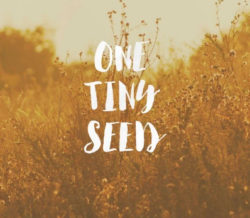 You’ve just planted the seed in your mind!
You’ve just planted the seed in your mind!
“This is what I care about and this is the path I need to take to support what I care about!”
What are some behaviors that align with your values and aspirations? Behaviors that reflect those intentions? Answer the following questions to complete this exercise…
- What behaviors reflect my intention to feel more energy and joy? Am I taking the time to be active with friends and family?
- What do I need to spend more time on so that I can feel more optimistic about my health and about the future? Should I be exercising? Should I make sure I eat a healthy, balanced breakfast in the mornings? More fruits and vegetables?
- How can I feel more attractive, confident and vibrant in the world? Should I be taking a good look at how I am spending my time? Should I spend more time taking care of myself? My health?
- What do I need to spend time on every day so that I can get into better shape? Should I be planning my days better so that I have time to exercise and eat healthier?
- Am I showing my family, friends, doctors and co-workers that I value my health? My life? That I care about my life and my future with them? Should I be setting a better example by living a healthier life? Should I be checking in with my doctor?
When you find your motivation flagging a bit, remind yourself of your values, not the new  behavior, which may be eating healthier or exercising. This creates a link between your values and your new behavior that allows you to support your positive change. When you are connected to your values, its easier to see what behaviors support achieving them! Your values will push you toward the new habits you need in your life so that your life’s values and aspirations can be achieved forever
behavior, which may be eating healthier or exercising. This creates a link between your values and your new behavior that allows you to support your positive change. When you are connected to your values, its easier to see what behaviors support achieving them! Your values will push you toward the new habits you need in your life so that your life’s values and aspirations can be achieved forever
Pointers From the Washington Nationals: How to Lose Weight and Keep It Off
- At November 03, 2019
- By Katherine
- In Articles, News
 0
0
If there’s anything we’ve learned after underdog team, the Washington Nationals, beat the heavily favored Houston Astros to win the 2019 World Series last week, it’s this: To win, you’ve got to have heart! If you don’t believe in yourself, if you don’t make yourself get up after you fall, you don’t have a chance of achieving your goals. And this goes for successfully changing any personal habit or anything about the world. Listen to what the Washington Nationals have to say about picking yourself back up after failing – repeatedly!
Third baseman Anthony Rendon: “Just try to keep on going!”
First baseman, Ryan Zimmerman: “What choice did we have?”
Manager, Dave Martinez: “They counted us out, they knocked us down, we had injuries early, we didn’t perform like we wanted to… I believed since day 1 that this thing would turn around.”
General Manager, Mike Rizzo: “Even when things were bad, even when it seemed like there was no way out back in the spring, they were total pros. They never wavered… But these guys, they’re confident, they really are. And they don’t lose that confidence or that focus regardless of the situation.”
Owner, Ted Lerner: “They say good things come to those who wait. 95 years is a pretty long wait. But I’ll tell you, this is worth the wait.”
Studies Show Long Term Weight Loss Maintainers Do The Same:
Successful weight loss maintainers do things differently than people who lose weight and gain it back: They recover from slips. Instead of allowing themselves to make excuses, fall back into old, unhealthy habits and relapse, successful lifetime weight loss maintainers see “mistakes” as normal. They learn lessons, try not to be emotional or overreact. They are objective, analytical, kind to themselves. They get over slips, get right back up, and move on. After all, do you really expect to be perfect?
One of my mantras through the years, that I borrowed from WWII UK Prime Minister, Winston Churchill, is, “If you’re going through Hell, keep going … Never give in, never give in, never, never, never!”
It is not always easy, including for me. That’s because we’re human and naturally flawed. But I firmly believe that we must live by this philosophy when it comes to doing good in the world or for ourselves.

Like the uplifting “Damn Yankees” song, sung by the hapless Washington Senators of old – before they finally beat the New York Yankees through (unknowingly) a deal with the devil: “You’ve Gotta Have Heart! All you really need is heart! When the odds are sayin’ you’ll never win; That’s when the grin should start! You’ve gotta have hope! Mustn’t sit around and mope! Nothin’s half as bad as it may appear; Wait’ll next year and hope!
(Washington Nationals’ quotes from The Washington Post)
9 Ways to Go Cold Turkey – From Halloween Sweets
- At October 31, 2019
- By Katherine
- In Articles, News
 0
0

Halloween can trip up even the most conscientious dieter. The sweets meant for the Halloween Trick-or-Treaters take hold, uncontrollable cravings take over, and before you know it, your midsection is carrying around its own very scary Halloween pumpkin! What’s worse? The holidays are just around the corner with potential weight gains of 5, 10 pounds overall. And what about those fabulous outfits you’ve planned for the parties and family reunions?
Relax! You can easily stop this cycle, but only with careful planning:
- You may get away with one big splurge on Halloween. But if you splurge for two or more days, it will probably effect your waist line negatively,
- Plan tomorrow carefully! Get your exercise in. Eat a big breakfast, medium lunch, and go light at night. You’ll be back to your former size within one to two days, and you certainly won’t gain anything,
- Give away or throw away the remaining candy tonight – or NOW! – so that there’s nothing left,
- To reduce the possibility of sweet cravings, make sure you’re getting 30 minutes to one hour of sunlight each day by taking a walk in the mornings or at lunch. You may be able to “catch up” on the weekend, if you didn’t get enough rays during the week. This increases the neurotransmitter, seratonin, which decreases with Fall’s reduced sunlight and can cause cravings and weight gain,
- Eat plenty of healthy carbohydrates, such as fruits, vegetables, whole grains and beans, to keep serotonin at optimum levels and reduce cravings of less healthy carbohydrates, such as refined sugar,
- If you want to lose weight, keep your candy – or other “extra” calories – to no more than 10% of your daily calories (that’s 200 calories for the average 2,000 calorie intake, or 150 for 1,500 calories).
- Try fun and healthier alternatives to sweets to have around your home and serve to family and guests, such as popcorn, roasted pumpkin seeds, sliced apples and fruit with nice dips,
- If you feel driven to eat sweets, it may be a signal that you’re depressed, anxious or stressed. Reduce tension and anxiety by exercising, meditating or talking with loved ones. It’s important to understand the core of the problem and for that, you may need to seek help from a professional,
- Most importantly, if you do find you overeat, lighten up! Don’t dwell on the negative and get over it! Analyze objectively what you can do differently next time.
- With awareness and good planning, you can have your sweets and eat them, too!
An Unexpectedly Flavorful Salad with Local Summer Peaches and Kale
Rush to your Farmer’s Market this week! The local peaches are exceptional: sweet, juicy, flavorful, and with a perfect velvety texture. This recipe is a tasty way to feature them at any gathering. And it’s always a favorite.
Fresh Kale & Summer Peach Salad with Toasted Almonds and a Balsamic Vinaigrette
Excerpted from my book: Diet Simple Farm to Table Recipes: 50 New Reasons to Cook in Season!
Serves 6
Vinaigrette:
3 Tablespoons Extra Virgin Olive Oil
1 Tablespoon Balsamic Vinegar
Salt and Pepper to taste
Salad Ingredients:
6 Handfuls of fresh Kale, washed, tough stems removed, and torn into bite-sized pieces or chiffonade
2 Cups Fresh Sliced Summer Peaches
2 Ounces toasted slivered Almonds
½ Sweet Onion, peeled and sliced
In a large bowl, add the olive oil, vinegar, salt and pepper. Whisk until blended. Add the kale, onion, almonds, and peaches. Toss together. Serve immediately.
Paleo Diet Linked with Increased Heart Disease Risk
The “Paleo Diet” is based on the idea that the human genome has not adapted to eating products of agriculture. Paleo dieters eat meat, fish, eggs, nuts, vegetables and few fruits, with no processed foods, grains or dairy products included. Short term, it may have the benefit of weight loss for some because of the sudden exclusion of refined starchy and sugary foods. But the long term picture isn’t so positive, according to a new study in the European Journal of Nutrition.
The study divided participants into groups of people consuming a strict Paleo diet, more relaxed Paleo plans and a traditional healthy diet, based on current health guidelines. The study found that because the strict paleo diet adherents ate zero whole grains, this apparently caused the increase of a compound called trimethylamine-N-oxide (TMAO) in the blood, which is associated a significant rise in cardiovascular disease risk.
The researchers attributed this negative result to the disruption in the gut microbiome caused by the lack of fiber and nutrients contained in whole grains. The gut’s microbiome is the collection of 100 million microorganisms in the digestive tract, which we now know, can make or break your health. Two recently published clinical studies confirm decades of evidence demonstrating that the nutrients and fiber in whole grains, such as whole wheat, oats, barley, rye, brown or wild rice, etc., are essential for overall well-being. They improve gut health (an emerging factor contributing to overall health), the immune system, cardiovascular health, blood sugar regulation, weight loss, and reductions in inflammation, a risk factor for diseases such as colds, arthritis, heart disease and cancer.
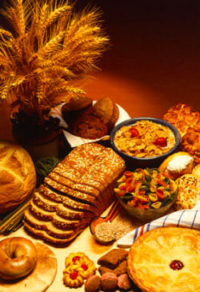 How much whole grain should you be consuming? My advice would be three to four one-ounce servings daily. For instance, two one-ounce slices of whole wheat, whole oat or whole rye toast in the morning, or two slices of whole grain bread for a sandwich at lunch, would be two servings. One cup of cooked brown rice or whole grain pasta would comprise another two servings. It doesn’t take much to receive health benefits. And the calories are lower than you’d expect.
How much whole grain should you be consuming? My advice would be three to four one-ounce servings daily. For instance, two one-ounce slices of whole wheat, whole oat or whole rye toast in the morning, or two slices of whole grain bread for a sandwich at lunch, would be two servings. One cup of cooked brown rice or whole grain pasta would comprise another two servings. It doesn’t take much to receive health benefits. And the calories are lower than you’d expect.
One whole grain serving (about 70 to 100 calories) = 1 ounce dry or 1/2 cup cooked whole grain. Read more about whole grains.
Celebrate the beginning of Fall with my popular Chile Non Carne – a client favorite, and surprisingly, made with cracked wheat.
A favorite hearty salad of mine and my clients is Tabouleh with Chick Peas, Seasonal Vegetables and a Lemony Basil Vinaigrette.


